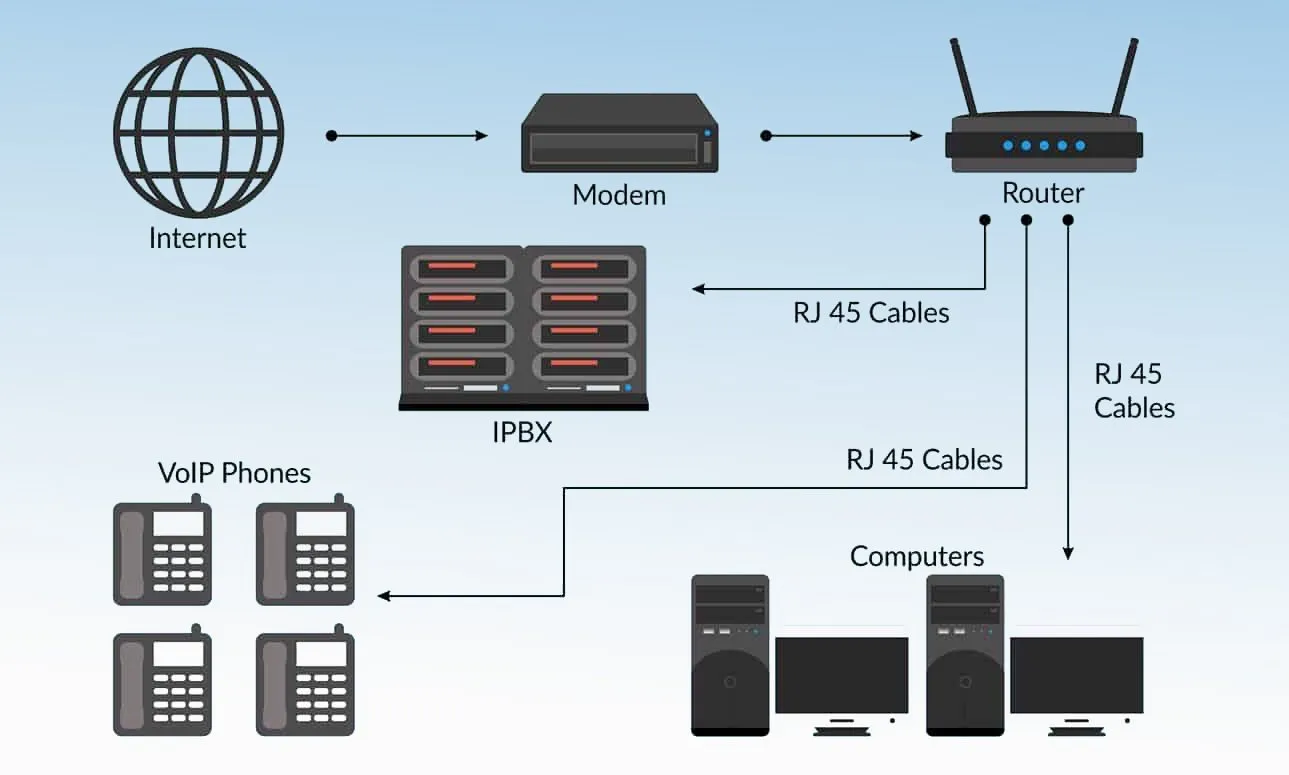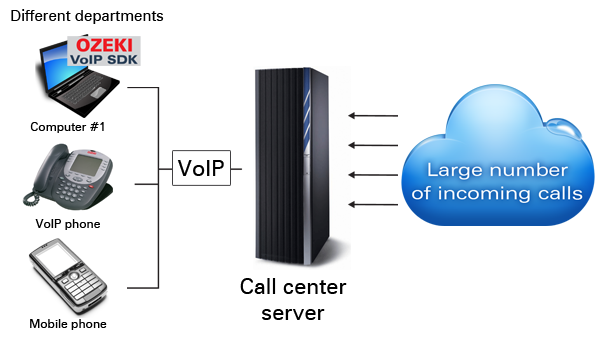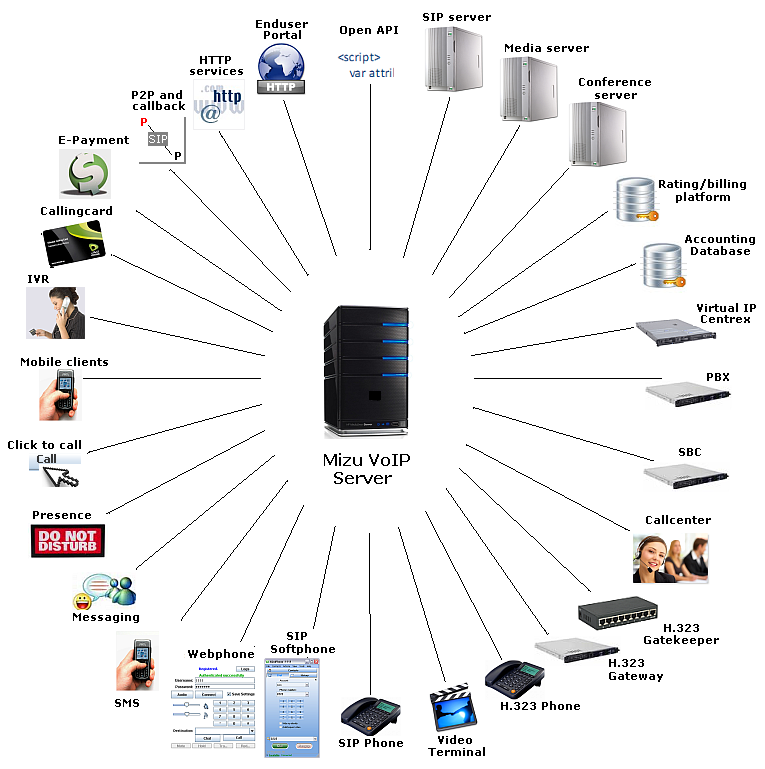Introduction:
In the digital age, Voice over Internet Protocol (VoIP) has gotten to be a crucial communication technology for businesses. To ensure smooth and uninterrupted VoIP communication, effective server monitoring, management, and administration are fundamental. This article will explore the leading hones and strategies for optimizing VoIP server performance, enhancing reliability, and overcoming challenges.
Understanding VoIP Server Monitoring:
VoIP server monitoring is a basic angle of ensuring reliable and high-quality communication. By monitoring different execution metrics, organizations can proactively recognize and resolve issues before they affect the client experience. This area gives an outline of the significance of VoIP server monitoring, key execution metrics to track, proactive observing techniques, and available monitoring tools and arrangements.VoIP server monitoring is vital since it enables organizations to identify and address potential issues that could disrupt communication. By continuously observing metrics such as call quality, latency, parcel loss, and jitter, organizations can recognize issues and take opportune corrective actions.Key performance metrics to monitor include call completion rates, MOS (Mean Opinion Score), jitter, latency, and packet loss. These metrics provide insights into the overall quality of VoIP calls and help identify areas for improvement.Proactive monitoring techniques involve setting up automated systems to regularly monitor performance metrics, generate alerts in case of anomalies, and conduct regular health checks of the VoIP servers. This proactive approach helps organizations address potential issues before they affect users.
Various monitoring tools and solutions are accessible within the market. These devices provide real-time monitoring, reporting, and analytics capabilities, allowing organizations to gain important bits of knowledge into their VoIP infrastructure. A few popular tools include organize observing software, call quality monitoring solutions, and log analysis tools.In conclusion, understanding VoIP server observing is significant for keeping up a high-quality communication environment. By observing key performance metrics, utilizing proactive monitoring techniques, and leveraging fitting monitoring tools, organizations can guarantee that their VoIP framework performs ideally and conveys a seamless communication encounter to users.

VoIP Server Management Strategies:
Effective administration of VoIP servers is essential to optimize execution, enhance reliability, and ensure smooth communication. This segment explores key strategies for VoIP server management, including capacity planning, excess and failover solutions, quality of benefit (QoS) optimization, transfer speed management, and security measures.Capacity planning plays a vital part in VoIP server administration. Organizations need to accurately evaluate their current and future needs to guarantee their servers can handle the expected call volumes. By considering variables such as concurrent call capacity, bandwidth requirements, and anticipated growth, organizations can dodge execution bottlenecks and ensure a seamless communication experience.Implementing repetition and failover arrangements is imperative for mitigating the chance of benefit disturbances. By deploying redundant hardware, such as backup servers or session border controllers, organizations can ensure continuity in case of hardware failures or organize blackouts. Failover instruments consequently divert activity to excess servers, minimizing downtime and protecting communication integrity.Optimizing Quality of Benefit (QoS) is vital for prioritizing VoIP traffic and maintaining call quality. By implementing QoS mechanisms, such as activity shaping or prioritization, organizations can minimize inactivity, jitter, and packet misfortune, guaranteeing a dependable and reliable client experience. Transfer speed administration is basic to allocate arrange assets viably. By implementing techniques like bandwidth forming or throttling, organizations can prevent arrange clog and guarantee adequate bandwidth for VoIP activity. Prioritizing VoIP bundles over other information sorts helps keep up call quality indeed in high-traffic scenarios.
Overcoming VoIP Server Challenges:
VoIP server challenges can pose critical obstacles to achieving seamless communication. This section highlights common challenges and investigates strategies to overcome them. These challenges include arrange congestion and latency, bundle loss and jitter, firewall and NAT traversal issues, VoIP server scalability, and interoperability and compatibility concerns.Network congestion and latency can impact VoIP call quality. Congested systems result in increased latency, leading to delays and disruptions in real-time communication. To overcome this challenge, organizations can actualize bandwidth administration methods, prioritize VoIP traffic through Quality of Service (QoS) settings, and optimize network infrastructure to decrease latency.Packet misfortune and jitter happen when organize conditions cause data bundles to be dropped or arrive out of arrange. This leads to debased call quality and disturbances. To address this challenge, organizations can actualize mistake correction mechanisms, prioritize VoIP parcels over other activity, and optimize network settings to minimize bundle loss and jitter.Firewalls and Organize Address Translation (NAT) can introduce complications for VoIP communication. These advances regularly block or alter VoIP traffic, causing network issues. To overcome this challenge, organizations can arrange firewalls to permit VoIP activity and utilize methods like Session Start Protocol (Taste) Application Layer Portal (ALG) to encourage NAT traversal.
VoIP server scalability is crucial for accommodating growing call volumes and user demands. Insufficient server resources can result in performance degradation and call failures. Organizations can overcome this challenge by implementing scalable server architectures, load balancing mechanisms, and cloud-based solutions to handle increased traffic and ensure smooth communication.Interoperability and compatibility concerns arise when different VoIP systems and devices use varying protocols and codecs. This can lead to communication difficulties between different platforms. To address this challenge, organizations should ensure compatibility between VoIP systems, employ transcoding mechanisms to convert between different codecs, and conduct thorough compatibility testing.

VoIP Server Challenges
Future Trends in VoIP Server Technology:
As technology advances, VoIP server innovation continues to advance, offering modern possibilities and openings. This area explores a few of the emerging patterns that are shaping the future of VoIP server technology, counting the integration of artificial intelligence (AI), automation and self-healing mechanisms, cloud-based solutions, and virtualization and containerization.The integration of fake insights (AI) in VoIP server technology holds great potential. AI calculations can analyze vast sums of information collected from VoIP systems, identifying designs and patterns to optimize server execution, foresee and anticipate potential issues, and improve call quality. AI-powered highlights like voice recognition and natural dialect processing can assist improve the client experience.Automation and self-healing components are getting to be increasingly prevalent in VoIP server technology. Automated systems can monitor server health, detect anomalies, and start corrective actions in real-time. Self-healing mechanisms can automatically resolve common issues without human intervention, lessening downtime and making strides by and large framework reliability.
Cloud-based solutions are picking up popularity within the VoIP server space. Cloud-based VoIP systems offer scalability, flexibility, and cost-effectiveness. By leveraging cloud framework, organizations can effortlessly scale their server assets based on request, ensure tall availability, and streamline server management and maintenance.Virtualization and containerization innovations are changing the way VoIP servers are sent and managed. Virtualization permits organizations to run multiple virtual instances of VoIP servers on a single physical server, optimizing asset utilization and rearranging server organization. Containerization empowers lightweight and portable sending of VoIP server components, facilitating fast scaling and deployment over different environments.

Conclusion:
In conclusion, ensuring seamless VoIP communication requires a comprehensive approach to server monitoring, management, and administration. By understanding the importance of VoIP server monitoring and tracking key performance metrics, organizations can proactively identify and address issues to maintain high call quality. Implementing effective VoIP server management strategies such as capacity planning, redundancy solutions, QoS optimization, bandwidth management, and robust security measures enhances performance, reliability, and user experience.
Overcoming VoIP server challenges such as network congestion, packet loss, firewall issues, scalability concerns, and interoperability problems requires strategic solutions. Organizations can optimize network infrastructure, prioritize VoIP traffic, employ NAT traversal techniques, adopt scalable architectures, and ensure compatibility between different systems to mitigate these challenges.
Leveraging Open Source in ICT